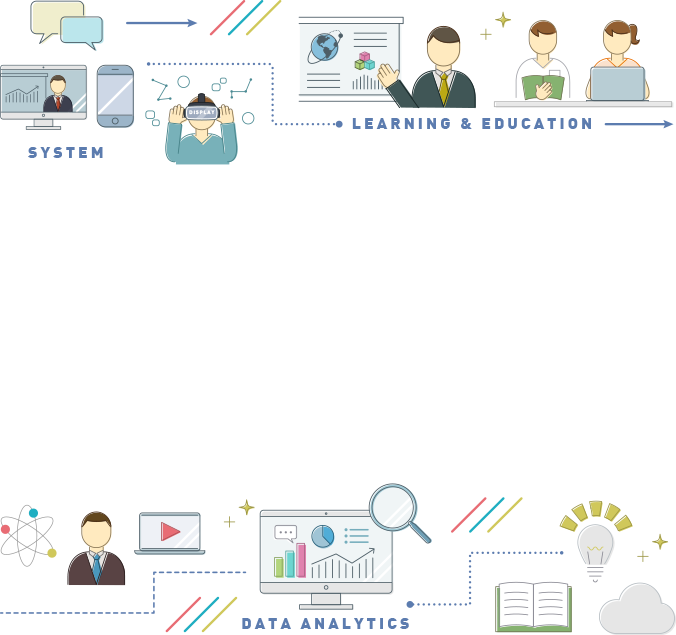Hello everyone, my name is Tang Li, M1 student.
I would like to introduce my paper for this English literature seminar.
I recently developed a prototype of my system and conducted a formative evaluation. A lot of data was collected and I found this study very helpful in terms of how to analyze it for future experiments and evaluations. In addition, the paper I read is based on a study of empathy-enhancing education and further utilizes VR technology. This paper shows that empathy can be experienced through VR technology and used as a learning tool for empathy-promoting education.
Paper title: Immersive virtual reality game for cognitive-empathy education: Implementation and formative evaluation.
Journal:Education and Information Technologies.
Pages:1−32
Authors:Jeon, H., Jun, Y., Laine, T. H., & Kim, E.
Year of publication:2023
Below is a summary of this paper. If you are interested, please read this paper.
———————————————————————————————————————
Empathy refers to the ability to think and understand from the perspective of others and can be divided into two main categories: cognitive empathy and emotional empathy. Cognitive empathy is the ability to understand the thoughts, perspectives, and feelings of others, and means cognitively grasping the emotions and situations of others. Emotional empathy, on the other hand, is the ability to intuitively sense the emotional situations of others. Empathy is considered one of the basic human skills, enabling social action and a means of understanding others.
Traditional psychological disciplines have tried to improve empathy by fostering the skills of recognizing others’ emotions, taking others’ perspectives, and demonstrating empathy. However, much empathy-promoting education research has focused primarily on role-playing-based scenarios in social situations involving observation, participation, and emotion. While those methods are effective in teaching to promote cognitive empathy, they do not adequately cover the foundational aspects of understanding the boundaries between self and others by understanding and accepting different perspectives. To fill this gap, this study focuses on education that promotes cognitive empathy and proposes the importance of understanding and accepting different points of view.
This study proposes a VR game, Mysterious Museum, as a new learning tool for cognitive empathy. The game aims to evaluate design concepts regarding system usability, content exhibition methods, and camera perspectives (FPP and TPP). The game’s content features a robot with an engineer’s point of view and describes the educational adventure of this robot, which wishes to transform into a human being. Two scenes unfold in the game, the “ambiguity room” and the “viewpoint room,” in which the user controls the robot using a controller and interacts with objects and the user interface using rays.
In particular, in the “viewpoint room” scene, two content display methods were tested: the “gallery” method and the “conveyor belt” method, and three camera viewpoint methods (i.e., “TPP (third-person viewpoint) – FPP (first-person viewpoint) camera shift,” “FPP fixed,” and “TPP-FPP fade in/out”) were considered for each. Fixed FPP” and “TPP-FPP fade in/out”) were considered. As a result, a total of six versions were subject to formative evaluation.
Formative evaluations examined VR sickness, system usability, and a comparison of different content display and camera viewpoint methods; while VR sickness negatively impacted learning effectiveness, system usability scored moderately well. Users also showed a preference for the “conveyor belt” method and the “FPP fixed” viewpoint, which they attributed to their effectiveness in reducing VR sickness symptoms.
One of the outcomes of this research is the development of the Mysterious Museum VR game, which provides a new approach to education that promotes cognitive empathy. The game made users aware that different perspectives exist, and that understanding these perspectives is important for the development of cognitive empathy. Although the effectiveness of the game was not directly measured in the formative evaluation, we infer from the observations and participant responses that the game has potential as a learning tool if the learning goals and methods are appropriately explained.
I personally gained insight from this paper on VR sickness and the evaluation of system usability. This is very important and emphasizes the importance of learners becoming familiar with the operation of VR systems for effective learning with it. The paper also demonstrated the importance of understanding how VR sickness may affect the experience and learning effectiveness and evaluating the usefulness of the systems through this assessment.
However, what was difficult to understand was the lack of clarity in the paper as to what learning strategies were being utilized to support empathy-enhancing education and the specific benefits of these strategies. Specifically, the goals that learners must achieve before they can acquire empathy are unclear. Furthermore, although the game is supposed to be for all ages, the participants in this formative evaluation were only college students. Does the need for empathy development apply to all ages, even though the authors plan to gather input from other age groups in the future? I have my own doubts about this. It seems to me that empathy cultivation is basically something that is nurtured starting with children, but I still do not understand why all age groups need empathy cultivation. Furthermore, I feel that the reasons for the use of VR are not convincing enough. The reason for choosing VR technology is that prior research has shown that VR games are more effective in fostering empathy than traditional 2D games. However, I do not believe that this is a sufficient reason to choose VR. If the relationship between VR’s characteristics and empathy cultivation could be more clearly demonstrated, I think it would be more convincing.
Overall, the paper offers fresh insights into empathy-enhancing education using VR and provides useful insights for researchers and educators. While some unsolved points remain, the innovative approach to teaching methods and the empirical study of VR sickness from a user experience have given me a deeper understanding of how technology can enhance and change the way we educate. I am looking forward to such research and further development in this area in the future.







